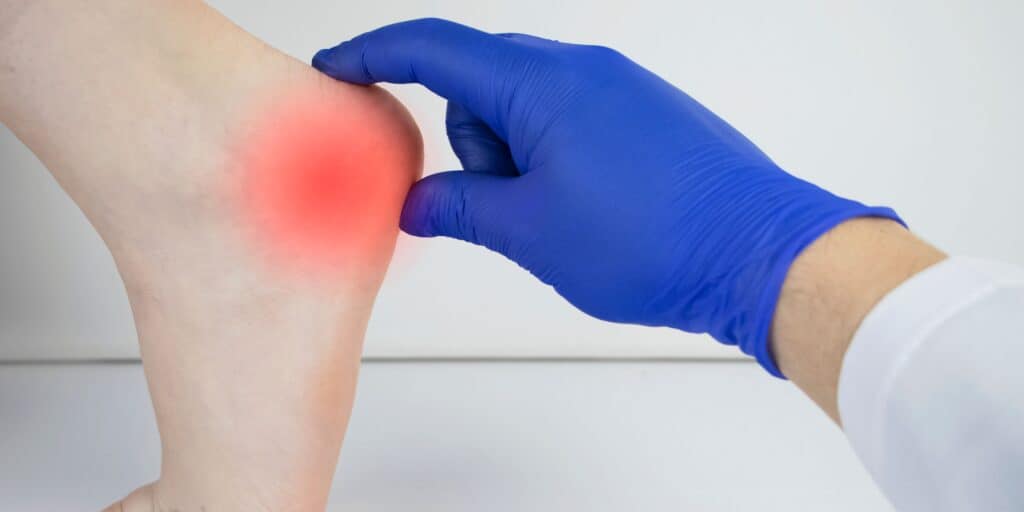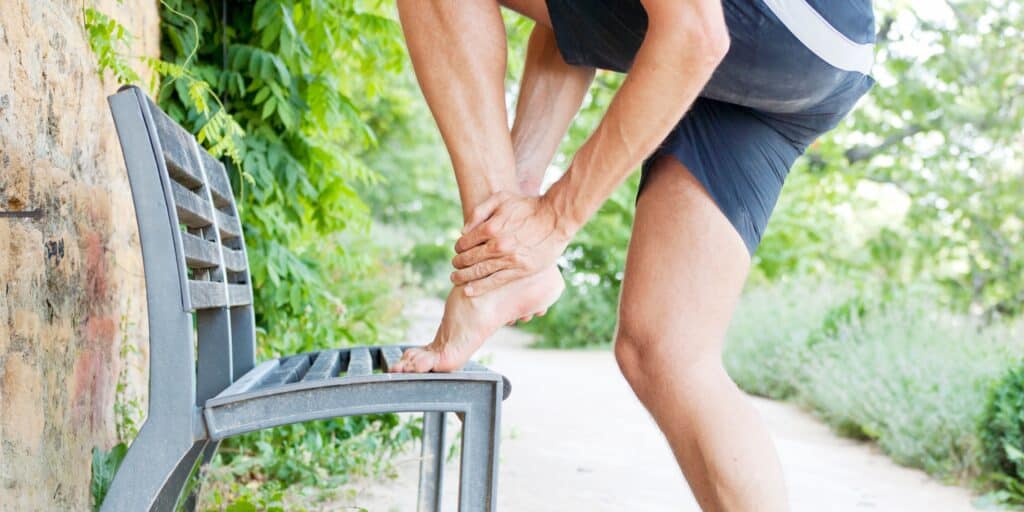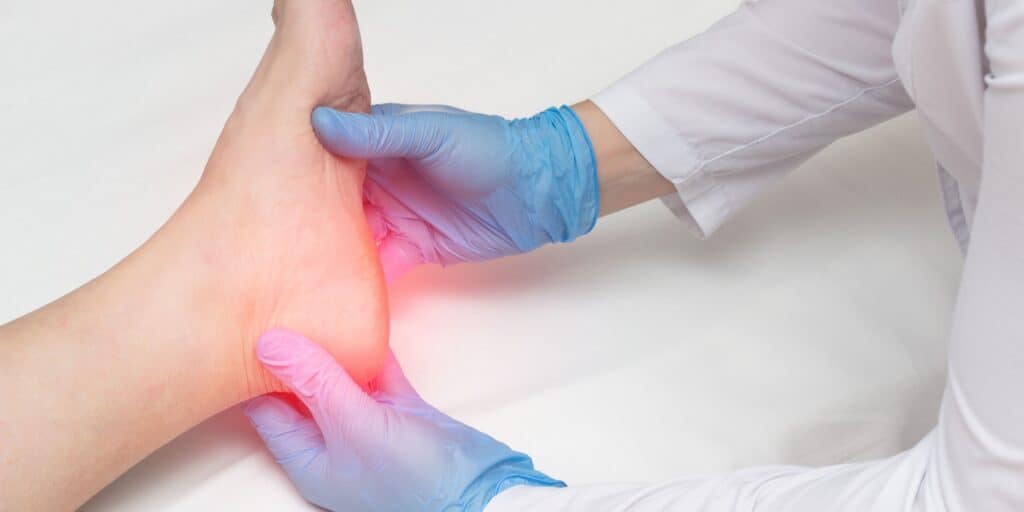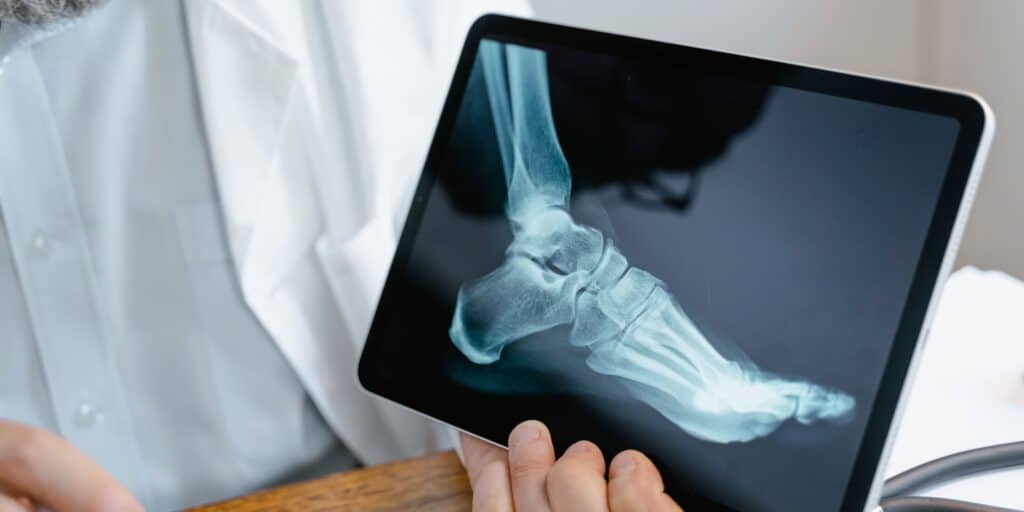Many people might not even know that they have spurs on their feet. Foot spurs are tiny projections of bone that can form on many different bones in the body. Spurs are commonly formed at the back and the bottom of the heel. These spurs form as a reaction to wear and tear in the body and are a sign that there is ongoing degeneration.

Although spurs are not usually painful, they can become irritating if they press against other tissues. If this happens, you may experience discomfort and inflammation. If you think you have a spur on your foot, it’s best to consult a doctor for diagnosis and treatment.
Bone spurs can develop in the foot as a result of excessive pulling from tissue such as tendons. Common sites of bone spurs include the bottom and the back of the heel. Bone spurs do not cause pain but are a result of disease processes that may in turn be painful. If you suffer from tight calf muscles or have frequent pain in the region of the heel, you may have bone spurs in your foot. While the spurs are not painful, tight shoe wear can cause pressure on the tissue overlying the bone spurs resulting in pain.
What Are the Symptoms Of Foot Bone Spurs?
The symptoms of foot bone spurs vary depending on their location and size. The most common symptom is pain, which can range from mild to severe. Additionally, bone spurs can cause stiffness, numbness, and difficulty walking.
The size, location, and symptoms of your bone spurs will all affect how they are treated. A bone spur that has been identified as a painless lump on your foot normally doesn’t need to be treated. Common treatments for bone spurs include:
Rest and ice: This may also help with any pain and inflammation.
Physical therapy: People with a bone spur in their foot or ankle can benefit from physical therapy to help strengthen the muscles and tendons around the affected area. Stretching and the use of special pads or orthotics may also help to take the pressure off of the bone spur.
Medication: OTC anti-inflammatory medications are frequently the first line of treatment for pain and inflammation because foot discomfort is the most prevalent symptom of a bone spur.
Cortisone injection: This may be beneficial if over-the-counter painkillers, rest, and ice don’t work to reduce pain and inflammation.
Surgery may be recommended if conservative approaches fail to reduce your discomfort. Surgery to treat bone spurs focus on treatment of the cause of the bone spur and may include joint arthroscopy to open surgery for the spur.
Can foot bone spurs be prevented? Treatment of the conditions that cause foot bone spurs can delay the formation of the spurs. If you experience foot or heel pain, it is best to seek medical attention early, so that the appropriate diagnosis and treatment for your condition is instituted. This can prevent the downstream formation of foot bone spurs.

Apart from preventing bone spur formation, you can prevent pain from bone spurs by wearing good fitting shoes that are neither too loose nor tight. Make sure your shoes are comfortable and have plenty of area in the toe box for your toes to move.
Consult a professional shoe fitter to get fitted for new shoes if you’re unsure of what a well-fitting shoe feels like. Your heel rubbing against your shoes can also be avoided by wearing socks, especially thick ones.
Heel and ankle pain in the morning might be because of a condition like plantar fasciitis or Achilles tendinitis. It may also be due to an injury like a stress fracture. Similarly, you might also experience heel pain getting up after a prolonged period of sitting down. Heel pain can sometimes be treated with at-home remedies like ice and rest. If your heel pain is more debilitating, an orthopaedic doctor can diagnose your symptoms and recommend treatment options that are best for you. While heel pain in the morning can be caused by any number of things, early diagnosis and treatment can help improve your quality of life. Don’t let heel pain keep you from living your best life – consult a doctor today to get started on a treatment plan.
Heel and ankle pain can oftentimes be caused by plantar fasciitis, but there are other disorders that can cause heel pain as well. if your heel pain is accompanied by any redness, fever, or extreme swelling, then it’s time to consult a doctor because those are all red flags that indicate a more serious issue. Heel pain can also be caused by Achilles tendonitis, heel bursitis, or stress fractures. Achilles tendonitis is the inflammation of the Achilles tendon, which connects the calf muscle to the heel bone. heel bursitis is an inflammation of the small sacs of fluid that act as cushions between bones and tendons near the joints. Stress fractures are tiny cracks in the bone that are caused by overuse or repetitive impact. If you’ve been having heel pain, make sure to ask your doctor what could be causing it because it may be something more serious than just plantar fasciitis.

Foot and ankle pain can be caused by a variety of problems, from short-term soft tissue injuries to long-term structural alterations or underlying conditions. The most common short-term causes of foot or ankle pain are sprains or strains, usually due to overuse or repetitive motion. However, some pain may not considerably improve with self-care or have a clear reason. In these cases, a structural alteration in the foot or ankle, as well as an underlying condition, may be the cause of the pain.
Long-term discomfort in the feet or ankles may have a number of causes, such as:
There are a few things you can do to prevent foot and ankle pain. First, it’s important to wear the right shoes. Make sure you have supportive, comfortable shoes that are appropriate for the activity you’re doing. You may need to change your shoes frequently, especially if you notice signs of uneven wear. Second, stretch before any activity. Stretching the muscles in your feet, ankles, and legs can prevent injuries and ease muscle soreness. Finally, be aware of your body and any discomfort or swelling you may experience. If you feel any pain, reduce your activity and rest until your body feels better. By following these simple tips, you can prevent foot and ankle pain.
Achilles tendinitis and plantar fasciitis, which affect the bottom of the heel, are the two most typical causes of heel discomfort (back of the heel). heel discomfort can also result from:
Heel and ankle pain can be caused by a variety of issues, including arthritis, a sports injury, or simple wear and tear. However, exercises to strengthen and stretch the lower limb muscles can often significantly reduce discomfort. For example, the calf muscle is responsible for plantar flexing the foot (i.e., pointing the foot downward).
When this muscle is too weak or too tight, it can contribute to heel pain. As such, exercises that target the calf muscle, such as calf raises, can be effective in reducing heel pain. Similarly, exercises that stretch the Achilles tendon can also help to relieve heel pain.
The Achilles tendon is a large tendon that connects the calf muscle to the heel bone. If this tendon becomes tight, it can pull on the heel bone and cause discomfort. As such, exercises that stretch the Achilles tendon, such as heel drops, can be helpful in reducing heel pain.

Finally, exercises that strengthen the muscles around the ankle joint can also help to reduce ankle pain. These exercises may include single-leg balance exercises or resisted dorsiflexion exercises. If you are experiencing heel or ankle pain, talk to your doctor about which exercises might be right for you.
Heel pain is a common ailment that can strike at any time, but there are some tips you can follow to help prevent it. First, always stretch before any strenuous activity, as this will help keep the muscles and tendons around your ankles and feet loose and limber. Second, apply ice to the area for 20 minutes each day if you suffer from Achilles tendonitis or plantar fasciitis, as this will help reduce any swelling. Finally, try to keep your feet in a stress-free environment as much as possible – wear comfortable shoes, avoid walking barefoot on hard surfaces, and take breaks often if you’re on your feet all day. By following these tips, you can help prevent heel and ankle pain before it starts.
Surgery is always the last option when treating any condition in order to avoid any potential hazards that may be involved. For example, in treating plantar fasciitis, the plantar fascia ligament is released from its attachment to the heel bone in order to permanently relieve the pain. The removal of the heel spur also helps to reduce pressure on the heel.
Wearing proper footwear is important for foot health, and can help prevent heel and ankle pain. orthotics can help treat arthritis by altering muscle stimulation to lower the joint burden. Additionally, wearing shoes that fit properly can aid with this because shoes that are too narrow or too tight may harm the joints in the foot. This is why wearing high heels is bad for arthritis since they put a ton of pressure on the foot’s arch, which can harm nearby joints. Inflammation of the joint in the morning or after resting it are signs of this condition, as is a pain in the foot when walking or performing high-intensity exercises. Wearing proper footwear can help prevent these issues, and keep you pain-free.